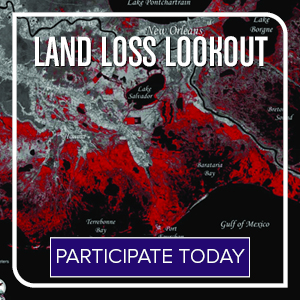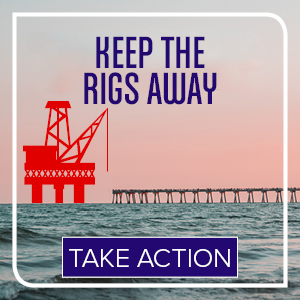Our Successes
2020
February: Healthy Gulf continued to advocate against environmentally destructive plans to dam the Pearl River in Jackson, MS in order to create a flood control lake. We helped organize a trip to D.C. for Healthy Gulf, elected officials, and industry representatives to meet with the Army Corps and members of Congress to raise our concerns. Healthy Gulf, Audubon, Sierra Club and the Mayor of Monticello also held a riverside press conference to give our views of alternatives to the “1 Lake” project.
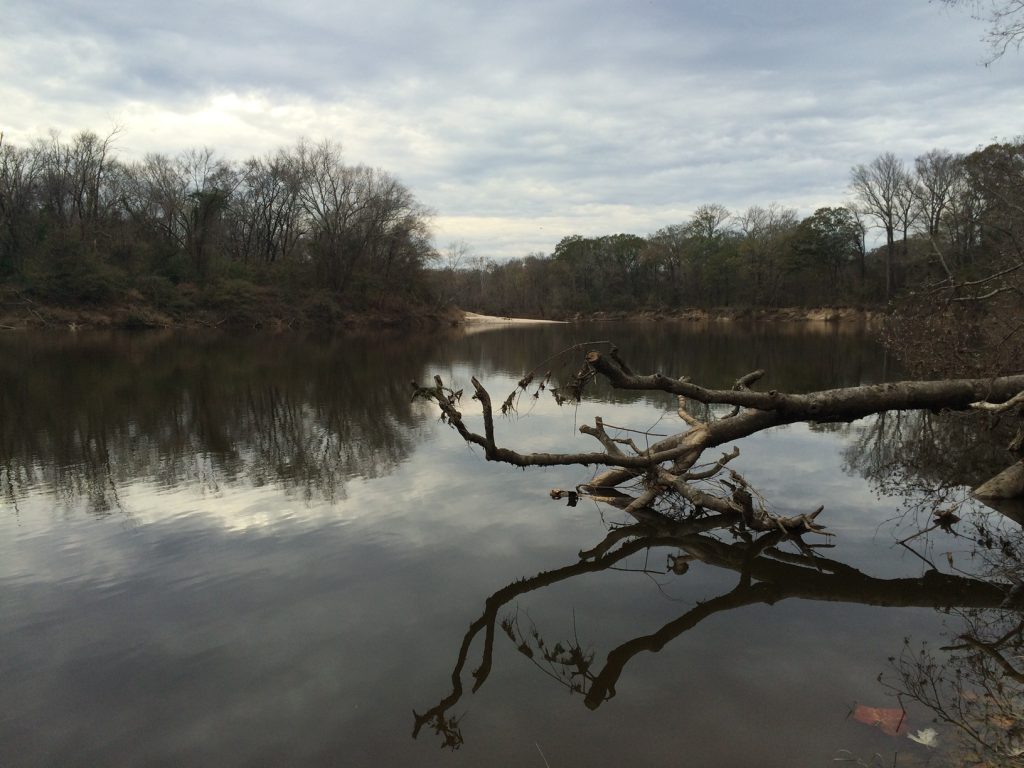
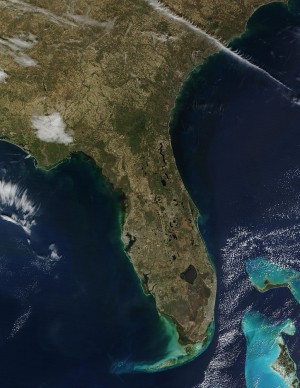
April: Our work engaging the community of Panama City and Florida environmental officials helped lead to a consent order from FDEP ordering the city to fix violations in its wastewater collection system and at one of its sewage treatment plants: Later in 2020, the City hired a consultant to prepare a plan to upgrade wastewater facilities to fix the violations and make additional upgrades. The City Council has since approved the final plan.
August: In the wake of the Bianca container ship spilling a billion plastics pellets into the Mississippi River in New Orleans, Healthy Gulf helped organize more than 25 surveys for pellets, some of which directly resulted in plastics cleanups by the insurance company responsible. We also worked to mobilize 25 volunteers for cleanups, representing hundreds of hours of clean up labor.
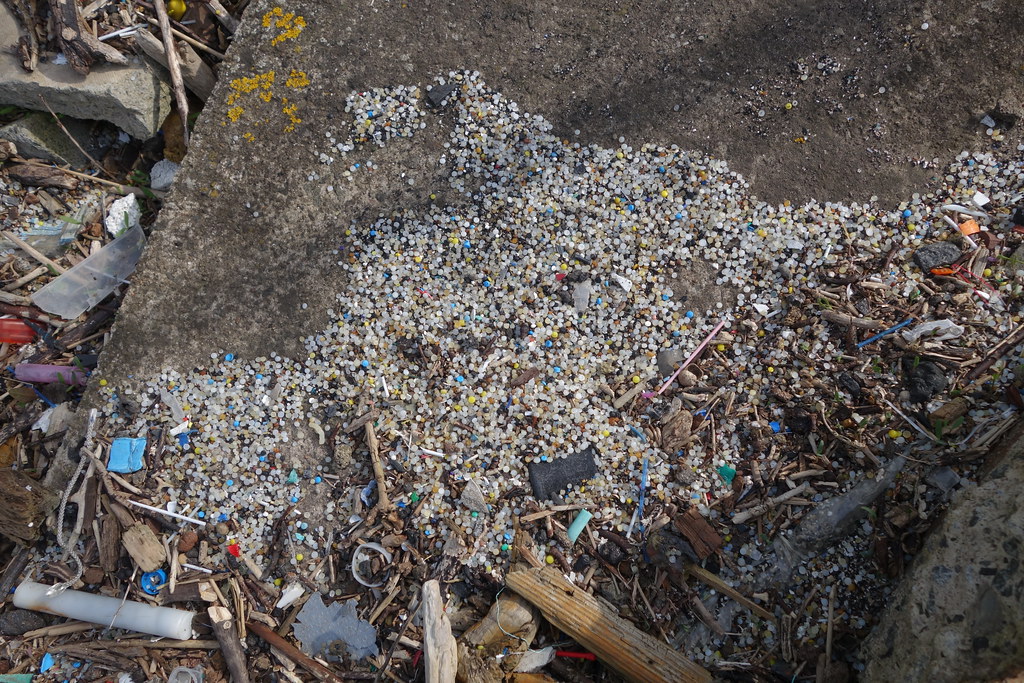
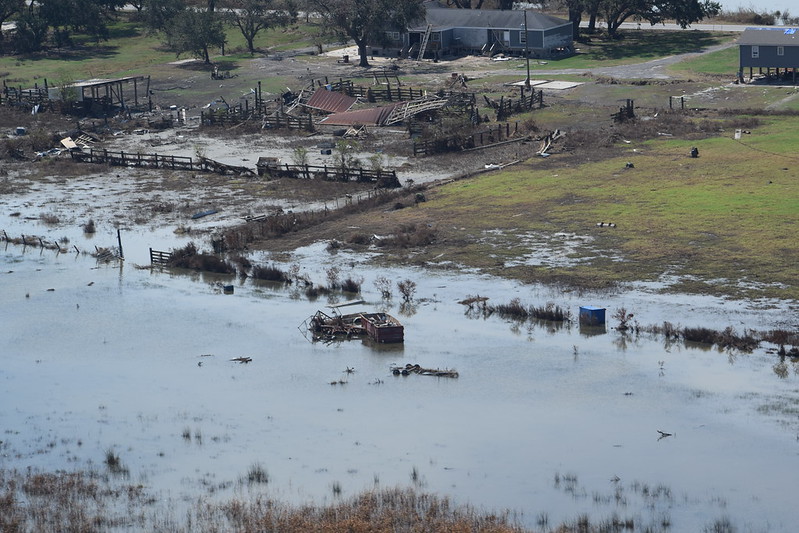
Summer: During a very busy Hurricane season, Healthy Gulf continued to monitor and document pollution and releases before, during and after storms, including 2 flyovers of Lake Charles after Hurricanes Laura and Delta.
September: Successfully launched Land Loss Lookout, a citizen science tool that trains people to see and document how rising seas, oil & gas exploration, and Mississippi River flood structures are drowning Louisiana’s wetlands.
September: In a hotly contested presidential election year, both major party candidates pledged that they would prohibit drilling for oil and gas off Florida. This reflects the good work done by Healthy Gulf and many partners in the conservation movement and beyond to make offshore drilling a key issue in FL and one where presidential candidates know they must oppose drilling in order to have any chance of winning the state.
October: Along with the Gulf Coast Center for Law & Policy, Healthy Gulf hosted the Gulf Gathering, a large virtual convening of climate and environmental leaders from across the five Gulf South states. With dozens of folks participating from each of the five Gulf South states, we identified state leaders for policy, action and communications, and developed our 2021 campaign plans.
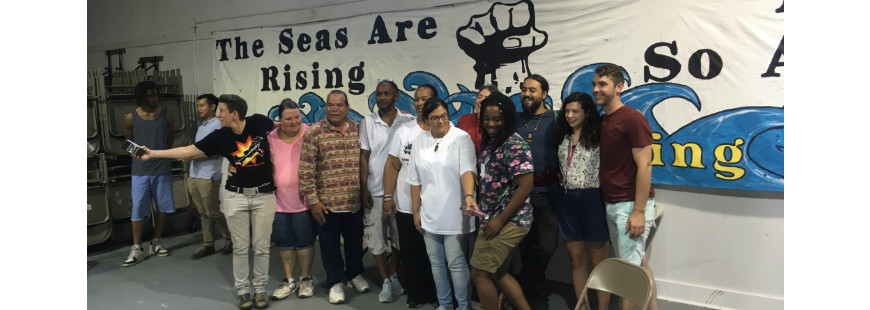
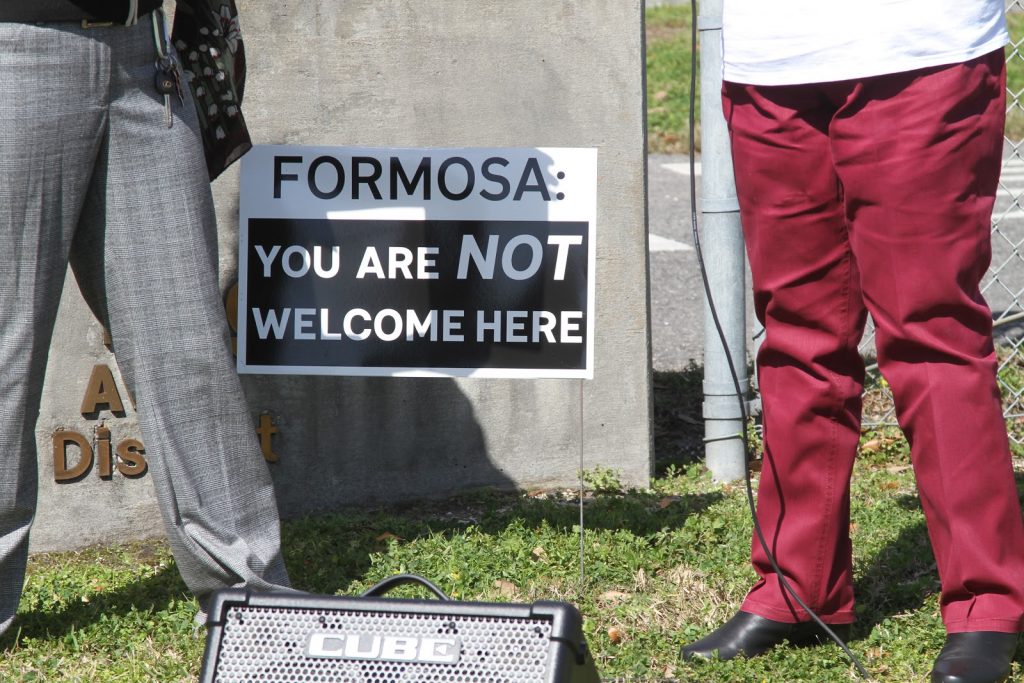
November: In November, litigation challenges resulted in the delay of two crucial permits for Formosa Plastics, a proposed plastics complex in St. James Parish, LA. The Army Corps of Engineers suspended the corporations’ wetlands permits pending analysis, and Judge White of the Nineteenth Judicial District sent their air permits back to state regulators for review. This was a one-two punch for the troubled plastics facility, which had seen continuous delays since April.
November: Co-hosted a successful community webinar to educate the public about the problems with the Ike Dike plan, a proposed coastal storm barrier in the Houston/Galveston area. Concerns include the impact on fisheries and water quality, as well as the high cost compared to other options. This and other outreach efforts generated many comments to the United States Army Corps of Engineers.
December: Healthy Gulf was a founding member of the Atchafalaya Basin Coalition which is working to preserve swamps and carry long-forgotten science into restoration of the Atchafalaya Basin. Other 2020 work to protect the Basin included challenging the delisting of the Louisiana Black Bear from the Endangered Species List, and a media tour of Atchafalaya Basin to highlight issues with sedimentation and educate the public about restoration plans.
2018
December: Working with broad coalition of chefs, fishers, and concerned citizens, Healthy Gulf helped defend the core conservation provisions of the Magnuson-Stevens Act, the main law overseeing our federal fisheries, against numerous legislative attacks. Although we opposed the bill that ultimately passed — the Modernizing Recreational Fisheries Management Act — it was drastically scaled back from earlier bad bills with many of the worst provisions removed. We look forward to working on a comprehensive Magnuson-Stevens Act (MSA) reauthorization that strengthens conservation in the new Congress.
December: Congress passed federal legislation that the president then signed to expand the Coastal Barrier Resources System (CBRS) on both coasts of Florida and several Atlantic coast states. The CBRS denies Federal subsidies for development such as flood insurance and beach nourishment monies while also adding thousands of acres of Florida wetlands, seagrass beds, beaches, and open water to the protections of the System. Healthy Gulf worked with citizens and partners to lead a successful effort to pass this legislation and to defeat a bad CBRS bill that would have removed thousands of acres of CBRS lands near Port Saint Joe.
November: Yearlong work to protect the Florida coast from oil and gas drilling culminated in passage of Amendment 9 — a measure on the election ballot that bans drilling in Florida state waters. Healthy Gulf recruited local governments, business groups, and citizen organizations to endorse resolutions of support for the measure and rally their members. We also assisted with a statewide coalition of conservation organizations to create social media content and other advocacy to assist in passage of the Amendment.
November: With Healthy Gulf’s support as a fiscal agent, the Coalition for Environment, Equity and Resilience was able to obtain funding for and hire a full-time Executive Director to forward its mission of driving community voices into the post-Hurricane Harvey decision-making process to promote equity and resilience by emphasizing land, water, air, waste, and housing policies that reduce human exposure to pollution and strengthen environmental conservation.
October: Healthy Gulf took a Washington Post reporter on a flyover of the leaking Taylor Energy wells, which led to a front page story highlighting the fact that Taylor Energy is one of the largest oil spills in US history. A day later, the Coast Guard ordered Taylor Energy to stop the leak.
October 4th: Healthy Gulf sent a letter to the Louisiana Department of Wildlife and Fisheries expressing strong opposition to a plan to build an airport in the Elmer’s Island Wildlife Refuge in Grand Isle, LA. The letter outlined why the project was a bad idea and documented illegal development activities that had already begun in the wildlife refuge; the airport plans were cancelled.
September: Healthy Gulf and our partners submitted over 3,000 comments opposing the Pearl River “One Lake” proposal during the project’s Draft Environmental Impact Study (DEIS) comment period. As a member of the One River No Lake Coalition, we presented up to date information to the public in three community forums during the comment period in Jackson, Gulfport and Monticello, Mississippi. In the run-up to the DEIS’s release, Healthy Gulf’s organizing and outreach efforts led to 13 resolutions against the damming of the Pearl River by downstream governments in Mississippi and Louisiana: two Parishes, four Counties, five Towns, a State Agency, and the Louisiana Legislature.
July: The Florida Department of Environmental Protection took additional enforcement actions to include a consent order mandating compliance following demands from Healthy Gulf regarding the noncompliance of Panama City-area sewage treatment facilities. Local citizens and environmental organizations took action to address violations related to fecal coliform, nitrogen, chlorine, and toxicity.
April 19th: Healthy Gulf released a report — “Oil and Gas in the Gulf of Mexico” — that reviewed ongoing damages from offshore oil and gas development to document Healthy Gulf’s monitoring efforts and highlight some of the most significant pollution events in 2017.
February: As part of our Flood Less New Orleans campaign, Healthy Gulf engaged dozens of residents in the planning process for Gentilly Resilience projects that are meant to reduce flood risk, slow land subsidence, and improve residents’ lives. In particular, the St. Anthony Green Streets project models good citizen engagement that we hope to see for future projects throughout the city.
2017
October: GRN settled a lawsuit brought against the Alabama Trustee Implementation Group (ATIG). The lawsuit was challenged the misuse of National Resource Damages (NRD) funds given to the state after the BP disaster. GRN filed the suit after ATIG approved the use of the NRD funds in the construction of a lodge and conference center for the Gulf State Park Enhancement Project. Under the new terms of settlement, $65 million will fund public amenity maintenance in the Gulf State Park. The settlement also prohibits the construction of a north-to-south road that would cut through the park. This is a huge win for Gulf residents with BP disaster funds now going towards public access amenities.
September: Healthy Gulf is ecstatic to welcome Abby Branman as the first Pearl Riverkeeper through the Waterkeeper Alliance. She will lead the organization in advocating, protecting, and keeping watch over the Pearl River. The foundation of this organization will help to clean up and restore this great waterway which is the fourth-largest source of freshwater discharge into the Gulf of Mexico. During the first Pearl River Clean Sweep, the Riverkeepers and 1,015 hardworking volunteers cleared out 36,782 pounds of trash. The communities along the Pearl River really care about protecting what they love.
August: Through their persistent correspondence, negotiation, and advocacy, GRN and its Saucier members reached an agreement with the Mississippi Department of Environmental Quality (MDEQ) regarding the new treatment permit for Lakeview R/V Resort. The new permit requires the resort to use chlorine in their sprayfield, comply with bacteria limits, track the amount of water sprayed, and report these findings. As a result, the resort will be held accountable for their waste management and waterways — such as the Tuxachanie Creek which leads into the National Forest in Mississippi — are protected.
March: GRN and the Atchafalaya Basinkeeper settled a lawsuit with the New Orleans District of the U.S. Army Corps of Engineers over the use of Regional General Permit NOD-13 (NOD-13) that permits the destruction of wetlands to build oilfield roads and other infrastructure. General permits require less rigorous oversight and analysis than regular Corps permits. Under the settlement, the Corps’ agreed that its re-evaluation of NOD-13 will propose exclusion of the Atchafalaya Basin from the scope of the general permit, and that NOD-13 cannot be used to authorize projects anywhere else in the New Orleans District until after that re-evaluation.
January 12th and February 9th: In response to pressure from GRN and our allies, the Army Corps of Engineers and Louisiana’s Departments of Environmental Quality and Natural Resources held two public hearings on the proposed Bayou Bridge fracked oil pipeline, which would harm hundreds of acres of flood-buffering wetlands and drinking water sources. GRN worked with our partners to encourage over 750 concerned citizens to attend, who together clocked almost 12 hours of spoken testimony.
January: GRN pressured agencies to preserve 700 additional acres as part of the Maurepas Swamp Wildlife Management Area to mitigate impacts from the Ascension Gas Pipeline.
January: The Land Trust for Mississippi Coastal Plain completed restoration of over 200 acres of wetlands in coastal Mississippi. This restoration was made possible by a settlement of GRN’s suit holding Hancock County Development Corporation accountable for illegal destruction of those wetlands.
January: GRN, working in partnership with Care2, generated over 100,000 petition signatures and comments supporting the National Marine Fisheries Service proposal to list the Gulf Bryde’s whale —which is estimated to have a remaining population of less than 100 — as an endangered species. Endangered status will help protect Gulf Bryde’s whales and their habitat.
January: GRN and the Mississippi Coast Sierra Club chapter were very successful in organizing attendance and encouraging public comments at the scoping meeting that began the George County Lake Environmental Impact Statement process, making a clear statement that coast residents are opposed to the project. The proposed George County lake would involve damming tributaries of the Pascagoula River, one of the last, large, free-flowing rivers in the lower 48 states.
2016
Year-Round: GRN coordinated 20 monitoring trips by air and sea in the Gulf to (1) survey wetlands, dune, and island restoration, (2) watchdog oil and gas impacts like Hilcorp and Shell’s major oil spills, and (3) assess the catastrophic flooding of August 2016.
Year-Round: Through monitoring, commenting, and challenging Corps of Engineers wetland destruction permits, GRN helped protect and restore 4,890 acres of wetlands in Gulf states over the course of the year.
Year-Round: The year was full of successful events! We found the Easter Keg during our annual scavenger hunt with NOLA Brewing, sailed out to Ship Island for the first time during our Boat Party, and attended dozens of Earth Month events organized by Aveda salons across the South. Halloween weekend, GRN hosted a booth at Voodoo Fest and signed up dozens of members to “Defend Our Coast.” Musicians from near and far gave us shout outs and took action, and The Breton Sound and Devon Baldwin flew with us to see Louisiana’s coast from the skies! Many thanks to the supporters and donors who made these events possible, we couldn’t do it without you.
November: GRN, as a member of the Mississippi River Collaborative, released “Decades of Delay: EPA Leadership Still Lacking in Protecting America’s Great River,” where we highlighted the impact and lack of action related to nitrogen and phosphorus pollution, the cause of the Dead Zone, toxic algae blooms, and drinking water contamination.
October: After GRN conducted a presentation to the Louisiana Oyster Task force about the downstream impacts of the “One Lake” project to dam the Pearl in Jackson, Mississippi, the Task Force sent a letter to the Louisiana Department of Natural Resources requesting that a Coastal Zone Consistency Review be conducted for the dam project, and that the project be rejected on the basis that other alternatives are less harmful to the Pearl River and coastal estuaries. We revisited the “One Lake” proposal in September 2018 and spurred 13 resolutions against the damming of the lake.
August: GRN, along with our partners, Our Sante Fe River, the Sierra Club, and Beyond Extreme Energy, brought together over 70 passionate community members and over a dozen organizations for the Grassroots Summit to Stop Sabal Trail in Gainesville, FL. At the Summit, we worked together to share information and develop strategies to stop the 516-mile natural gas pipeline and other similar projects in the region.
August: Through technical comments, hearings, and a legal challenge, GRN and partners pressured agencies to reverse a decision to lower wetland damage mitigation for the Maurepas Swamp, resulting in over 4,000 additional acres added to the Maurepas Swamp Wildlife Management Area. The mitigation preserves this swamp and bottomland forest against logging in exchange for Motiva’ Louisiana Refining System pipeline impacts.
June: In the first half of 2016, two separate developers brought requests before the City of New Orleans Board of Zoning Adjustments for exemptions to the Comprehensive Zoning Ordinance Stormwater Management requirements, which are designed to encourage sustainable development and reduce urban stormwater runoff. GRN worked with St. Peter Claver Micah Project and members of the surrounding neighborhood, the Treme, to arrange a meeting with the developers. At the meeting, residents reached an agreement with the developers on how they could meet their stormwater requirements and receive community support for the project — a win-win.
May: Plaquemines and Jefferson parish leaders and residents scored a key victory toward preserving their coastal communities from the proposed RAM export terminal when the Louisiana Department of Natural Resources’ (DNR) decided to reconsider RAM’s coastal use permit. This proposed coal export terminal would have started mile-long uncovered coal trains running through nearby communities and would have also undermined a major project in Louisiana coastal restoration plans, the Mid-Barataria Sediment Diversion.
April: Through the significant advocacy of the GRN and Texas residents, the RESTORE Council funded six restoration projects along the Texas Coast totaling $26 million through its Funded Priority List. These projects galvanize coastal communities by conserving and restoring coastal corridors in the Bahia Grande and the Matagorda and Galveston Bay, as well as plugging eleven abandoned oil wells in the Padre Island Seashore.
February: In response to a lawsuit filed by GRN, the United States District Court for the Southern District of Alabama prohibited Alabama and federal officials from spending $58.5 million dollars of BP drilling disaster “natural resource restoration” funds to construct a hotel and conference center along an Alabama beach.
Click here to see victories from previous years.

